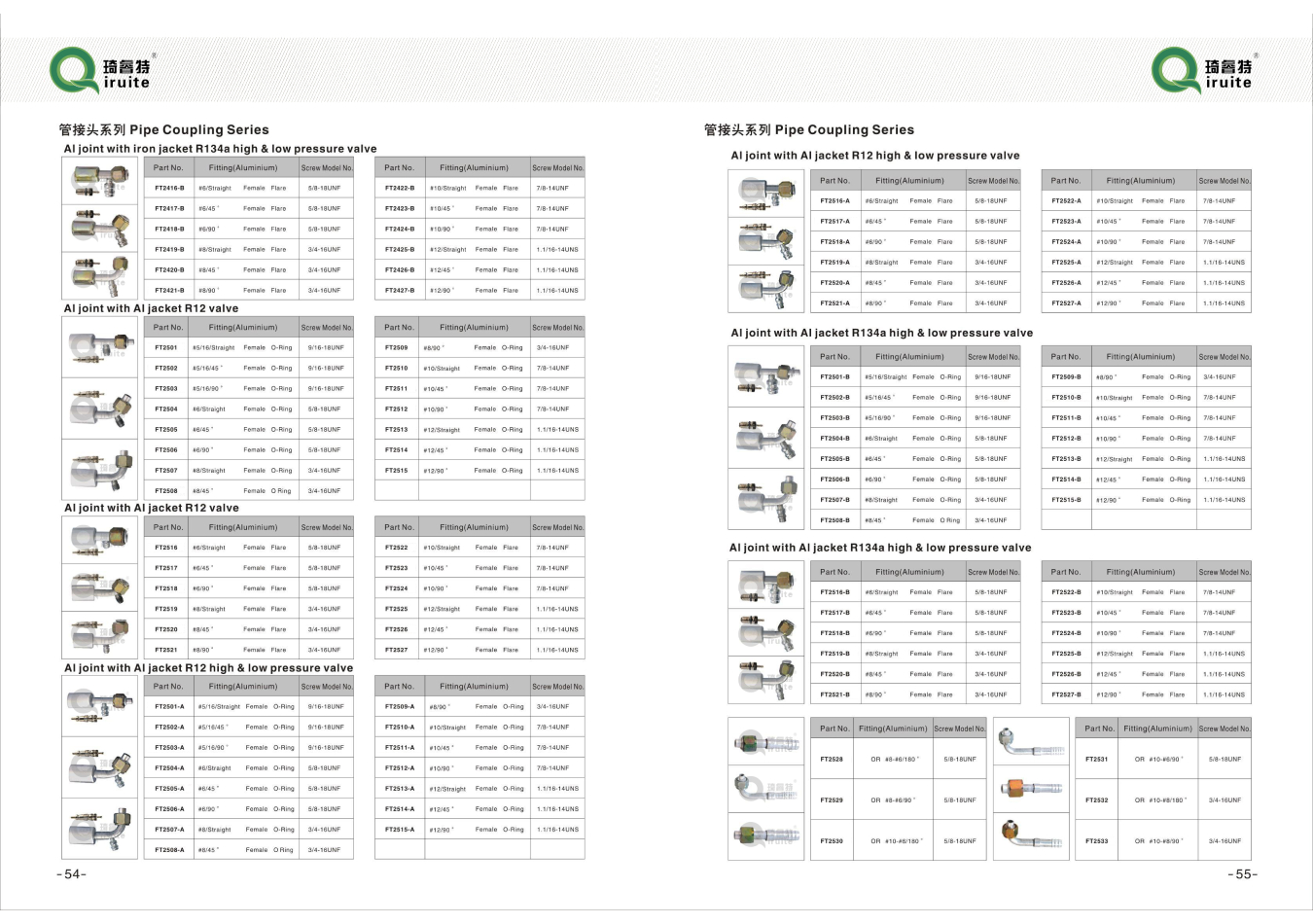Selecting the Right Brake Line and Fittings for Your Vehicle Maintenance Needs
Understanding Brake Lines and Fittings A Comprehensive Guide
When it comes to vehicle safety, few components are as critical as the brake system. Brake lines and fittings play a pivotal role in ensuring that your vehicle can stop effectively and reliably. This article delves into the intricacies of brake lines and fittings, covering their types, installation, maintenance, and the importance of quality in these components.
The Importance of Brake Lines
Brake lines are essentially the lifelines of the braking system. They transport brake fluid from the master cylinder to the brake calipers or drums, creating the hydraulic pressure needed to activate the brakes. The integrity of brake lines is vital; any leaks or blockages can lead to decreased braking performance or, in the worst-case scenario, complete brake failure.
Brake lines are typically made from reinforced rubber or metal, with metal lines often composed of steel or aluminum to withstand the corrosive qualities of brake fluid. Understanding the different types of brake lines available can help vehicle owners select the best option for their specific needs.
Types of Brake Lines
1. Rubber Brake Lines These are common in many vehicles. They offer flexibility, which is crucial during movement and suspension travel. However, they are susceptible to wear and degradation over time and can be affected by exposure to heat and environmental contaminants.
2. Steel Brake Lines These are more durable and resistant to wear, making them a popular choice for performance and heavy-duty vehicles. Steel lines help maintain consistent pressure and are less likely to swell under heat.
3. Stainless Steel Brake Lines These lines are encased in a layer of braided stainless steel for added protection. This type not only enhances durability but also offers maximum resistance to corrosion and wear, making them ideal for high-performance vehicles or those operating under extreme conditions.
4. Polymeric Brake Lines A relatively newer option, polymeric lines offer lightweight properties and excellent resistance to corrosion. They are becoming increasingly popular due to their flexibility and improved performance under varying temperatures.
brake line and fittings

Brake Fittings and Their Role
While much focus is on the brake lines themselves, the fittings are equally critical. Brake fittings connect the lines to the brake components and ensure a leak-free seal. They come in various shapes and sizes, including
- Compression fittings These create a tight seal by compressing the fitting around the brake line.
- Flare fittings Used predominantly with metal lines, flare fittings involve a cone-shaped end that fits into a matching cone on the corresponding part, creating a tight joint.
- Banjo fittings Often used in hydraulic brake systems, banjo fittings offer a connection that allows fluid to flow in two directions, which can help in simplifying installations due to their unique design.
Installation and Maintenance
Proper installation of brake lines and fittings is crucial for safety and system performance. When installing, ensure that the components are compatible and that all connections are tight to prevent leaks. It’s advisable to use a torque wrench to ensure that fittings are not overtightened, as this could cause damage.
Regular maintenance is also essential. Inspect brake lines for signs of wear, corrosion, or leaks. Likewise, check the fittings to ensure they are secure and not showing signs of rust or damage. Replacing aged components at the first sign of wear can prevent more serious issues down the line.
Conclusion
The significance of brake lines and fittings cannot be overstated. They are vital components of any vehicle’s braking system, and understanding their types, roles, and maintenance can enhance safety and performance. Whether you are a car enthusiast or a casual driver, ensuring the integrity of your brake lines and fittings is crucial for a safe driving experience. Always opt for high-quality materials and components, and don’t hesitate to consult a professional mechanic for installation or maintenance services. Your safety on the road depends on it.
-
Ultimate Spiral Protection for Hoses & CablesNewsJun.26,2025
-
The Ultimate Quick-Connect Solutions for Every NeedNewsJun.26,2025
-
SAE J1401 Brake Hose: Reliable Choice for Safe BrakingNewsJun.26,2025
-
Reliable J2064 A/C Hoses for Real-World Cooling NeedsNewsJun.26,2025
-
Heavy-Duty Sewer Jetting Hoses Built to LastNewsJun.26,2025
-
Fix Power Steering Tube Leaks Fast – Durable & Affordable SolutionNewsJun.26,2025

